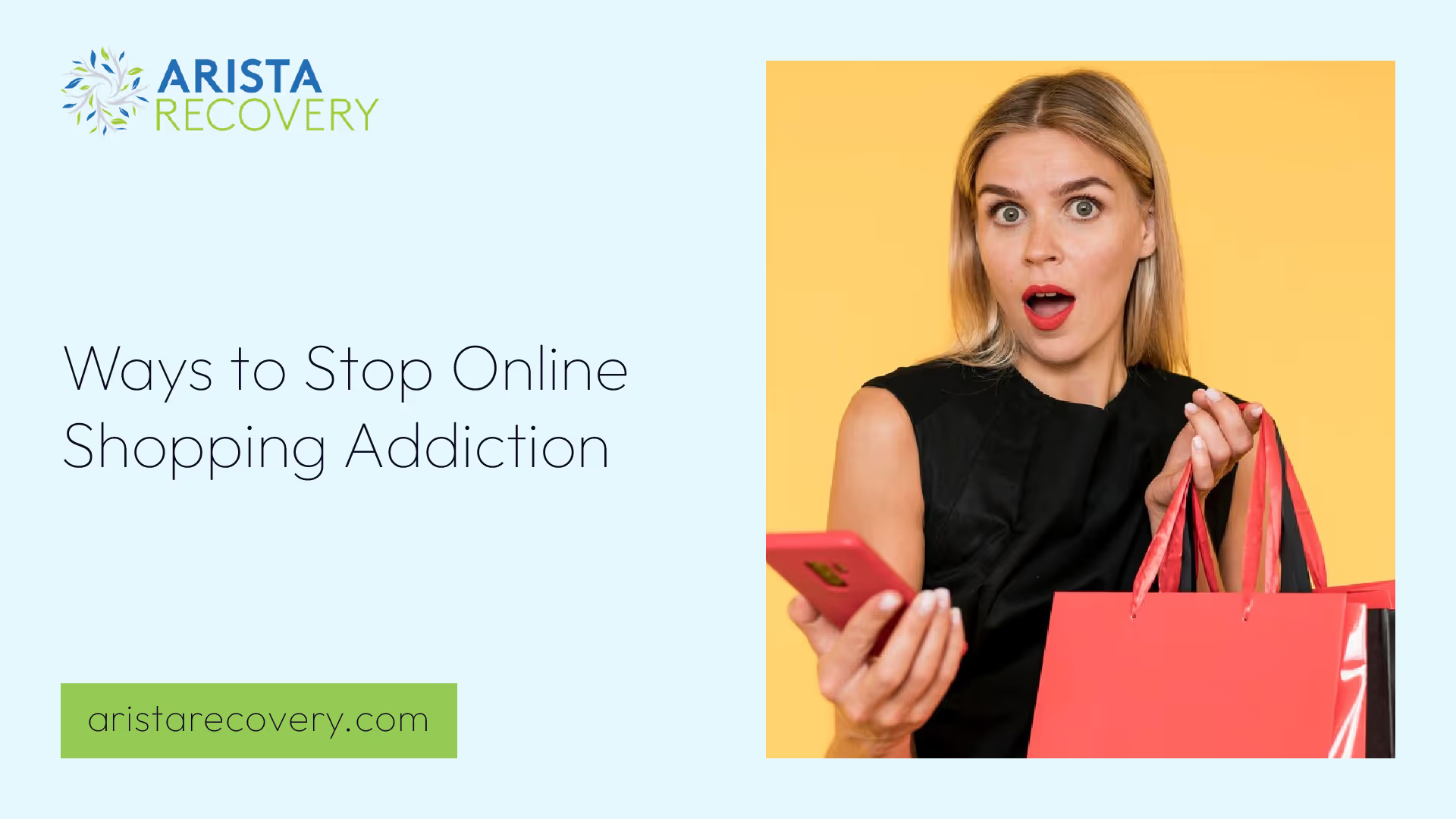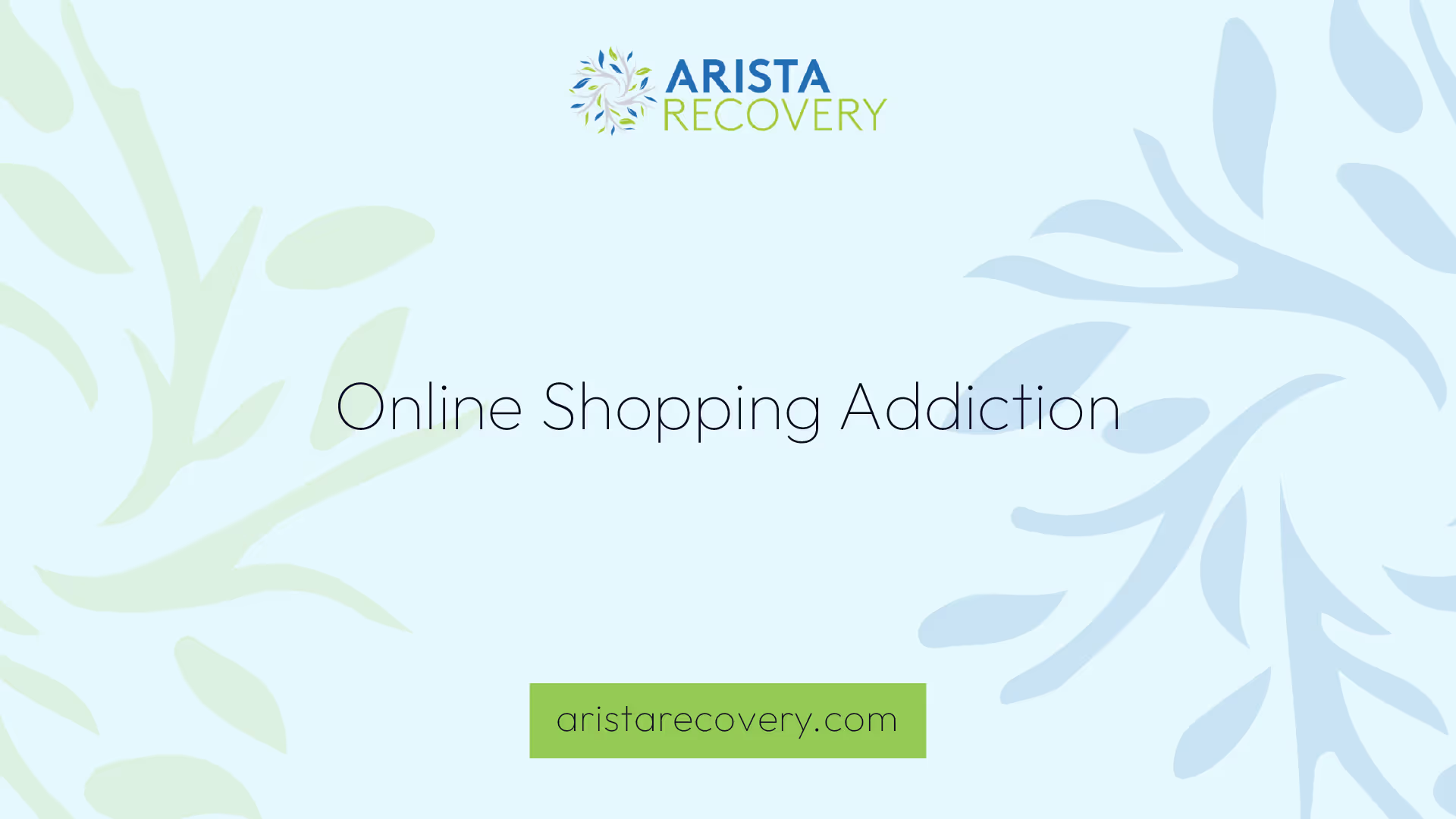Ways to Stop Online Shopping Addiction


Understanding Shopping Addiction
What is Shopping Addiction?
Shopping addiction, also known as compulsive buying disorder (CBD), is a behavioral addiction that stimulates the brain's reward and pleasure centers, similar to the effects of drugs or alcohol. Individuals with shopping addiction experience a high during the buying process, which can lead to financial problems and serious mental health disorders if left unchecked [2].
CBD affects nearly six percent of Americans throughout their lifetime and can have disastrous negative effects, including financial turmoil and debt. It is highly co-morbid, occurring with many mental health and substance use disorders. According to a 2007 study in World Psychiatry, CBD is characterized by excessive shopping cognitions and buying behavior that leads to distress or impairment, with a lifetime prevalence of 5.8% in Americans. The study notes that about 80% of CBD subjects are women.
Types of Shopping Addictions
Shopping addiction manifests in various forms, each with its own unique characteristics and challenges. Understanding the different types can help in identifying specific behaviors and seeking appropriate interventions.
- Compulsive Shopping: Persistent, repetitive buying sprees that are difficult to control.
- Impulse Buying: Unplanned purchases driven by immediate desires without considering the consequences.
- Bulimic Shopping: Cycles of buying and returning items, often associated with feelings of guilt and shame.
- Bargain-Hunting: Obsessive searching for deals and discounts, leading to unnecessary purchases.
- Collecting: Accumulating items excessively, often without the intention of using them.
Each type of shopping addiction can lead to financial issues and emotional distress, making it essential to recognize and address these behaviors early on [1].
For more information on dealing with different types of addictions, check out our articles on how to stop phone addiction for students, how to stop dopamine addiction, and how to stop youtube addiction.

Impact of Shopping Addiction
Shopping addiction, clinically known as compulsive buying disorder (CBD), can have far-reaching consequences that extend beyond just the financial realm. Understanding the impact of this addiction is crucial for those seeking to break the cycle.
Financial Consequences
One of the most immediate and severe effects of shopping addiction is financial instability. Individuals suffering from this disorder often find themselves in a cycle of uncontrollable spending, which can lead to significant financial problems. According to The Guest House Ocala, CBD affects nearly six percent of Americans throughout their lifetime and can result in substantial debt and financial turmoil.
Online shopping addiction is particularly concerning due to the ease of overspending from the comfort of one's home. The remarketing techniques used by online stores can repeatedly tempt addicts, making it challenging to resist the urge to buy.
Emotional Distress
The emotional toll of shopping addiction is equally significant. Individuals with CBD often experience a range of negative emotions, including guilt, shame, and anxiety. These feelings can be exacerbated by the financial consequences of their addiction, creating a vicious cycle of emotional distress and compulsive buying.
Shopping addiction is also highly co-morbid with other mental health disorders. It often occurs alongside conditions such as anxiety, depression, and substance use disorders. The chronic nature of this disorder means that individuals have little control over their compulsive shopping behavior, leading to further emotional distress [1].
Understanding the impact of shopping addiction is the first step toward recovery. For strategies on how to overcome this addiction, check out our section on self-reflection and triggers and setting limits and budgeting. Additionally, recognizing the signs of addiction, such as neglecting responsibilities and hiding shopping habits, can help in identifying and addressing the problem early on.
For more resources on managing and overcoming addiction, visit our articles on how to stop phone addiction for students and how to stop youtube addiction.

Online Shopping Addiction
Causes of Online Shopping Addiction
Online shopping addiction is a significant concern due to the ease of overspending from the privacy of one's home [1]. Several factors contribute to this addiction:
- Convenience and Accessibility: The ability to shop online 24/7 makes it easy to make impulsive purchases. E-commerce has grown significantly, with total sales globally reaching $4.2 trillion in 2020 [3].
- Instant Gratification: The act of purchasing triggers instant happiness through the release of dopamine in the brain, creating a reinforcing loop that can lead to addictive behavior [3].
- Emotional Management: Many individuals use online shopping as a way to manage their emotions, distracting themselves from uncomfortable feelings. This habit-forming behavior makes it challenging to control online shopping urges [3].
- Remarketing Techniques: Online stores use remarketing techniques that repeatedly tempt addicts, making it difficult to resist the urge to buy.
Understanding these causes is essential for identifying and addressing online shopping addiction.
Effects of Online Shopping Addiction
Online shopping addiction can negatively impact various areas of an individual's life, including finances, relationships, and mental health. Here are some of the prominent effects:
- Financial Consequences: Overspending can lead to significant debt and financial instability. In 2022, online shopping sales were estimated at $1,034.1 billion, increasing 7.7% from 2021.
- Emotional Distress: The cycle of buying and feeling regret can lead to emotional distress, including guilt and anxiety. Financial literacy has a significant and negative relationship with problematic internet shopping, with a regression coefficient of -0.13.
- Neglecting Responsibilities: Addicts may neglect their daily responsibilities, leading to strained relationships and reduced productivity.
- Hiding Shopping Habits: Many individuals with online shopping addiction hide their purchases, leading to secrecy and potential conflicts with loved ones.
Recognizing the effects of online shopping addiction is crucial for taking the necessary steps to overcome it. For more information on understanding shopping addiction, visit our section on how to stop dopamine addiction. Additionally, explore our tips on how to stop phone addiction for students for related insights.
Strategies to Overcome Addiction
Addressing online shopping addiction requires a multifaceted approach. By implementing effective strategies, individuals can regain control over their shopping habits and mitigate the negative impacts on their lives.
Self-Reflection and Triggers
Self-reflection is a critical first step in understanding and overcoming online shopping addiction. It involves recognizing the emotions and situations that trigger the urge to shop excessively. Common triggers include boredom, stress, loneliness, and the desire for instant gratification [4].
To identify these triggers, keeping a journal can be helpful. Documenting the times, places, and emotions experienced before and after shopping can provide valuable insights. Reflecting on these patterns can help individuals become more aware of their shopping habits and the underlying causes.
By understanding these triggers, individuals can develop healthier coping mechanisms. For example, instead of shopping when feeling stressed, they might engage in physical activity, practice mindfulness, or talk to a friend. It's also important to avoid shopping when emotionally vulnerable and to seek accountability from trusted friends or family members.
For further reading on managing addiction triggers, visit our article on how to stop dopamine addiction.
Setting Limits and Budgeting
Establishing clear limits and a budget is essential in curbing online shopping addiction. This approach helps individuals gain control over their spending and reduce financial distress.
Steps to Setting Limits and Budgeting:
- Create a Monthly Budget: Outline all necessary expenses, such as rent, utilities, and groceries. Allocate a specific amount for discretionary spending, including online shopping.
- Use Shopping Lists: Before making any purchases, create a list of needed items. Stick to this list to avoid impulse buys.
- Implement a Waiting Period: Enforce a waiting period, such as 24 hours, before making any non-essential purchases. This can help reduce impulsive buying decisions.
- Delete Shopping Apps: Remove shopping apps from mobile devices to reduce temptation.
- Set Spending Limits: Use online banking tools to set spending limits on credit and debit cards.
A structured budget can alleviate financial stress, making it easier to save money and reduce credit card debt. Here is a sample monthly budget to illustrate:
Adhering to a budget and setting spending limits can significantly reduce the financial and emotional toll of online shopping addiction. For additional tips on managing finances and reducing spending, please visit our article on how to get out of debt.
By combining self-reflection with practical financial strategies, individuals can take control of their online shopping habits and work towards a healthier, more balanced lifestyle.
Professional Help and Support
Shopping addiction, particularly online shopping, can be challenging to overcome without professional assistance. Various methods, including Cognitive-Behavioral Therapy (CBT) and support groups, can provide effective strategies for managing and overcoming this addiction.
Cognitive-Behavioral Therapy (CBT)
Cognitive-Behavioral Therapy (CBT) is a well-established method for treating various behavioral addictions, including online shopping addiction. CBT focuses on identifying and changing the thoughts and behaviors that contribute to addictive behaviors. This type of therapy helps individuals understand the underlying emotional triggers that lead to compulsive shopping, enabling them to develop healthier coping mechanisms [4].
Key aspects of CBT for shopping addiction:
- Identifying Triggers: CBT helps individuals recognize the specific situations, emotions, or thoughts that trigger their shopping urges.
- Behavioral Modification: Patients learn to replace unhealthy shopping habits with healthier alternatives.
- Cognitive Restructuring: Therapy sessions focus on reframing negative thoughts that lead to compulsive shopping.
- Skill Development: Individuals are taught skills to manage stress, anxiety, and other emotional issues without resorting to shopping.
Additionally, online therapy can be a convenient option for those with busy schedules or other constraints. CBT has shown success in treating compulsive shopping disorder and can be combined with medication to address co-occurring mental health conditions.
Joining Support Groups
Support groups are another valuable resource for individuals struggling with online shopping addiction. Groups like Shopaholics Anonymous and Debtors Anonymous offer a sense of community, accountability, and the opportunity to learn from others who have successfully managed their addiction. These groups can provide emotional support and practical advice for overcoming shopping addiction [4].
Benefits of support groups:
- Community Support: Sharing experiences with others who have similar struggles can reduce feelings of isolation.
- Accountability: Regular meetings and check-ins help maintain commitment to recovery.
- Shared Strategies: Members exchange tips and techniques that have worked for them.
- Emotional Support: Having a network of understanding peers can provide emotional relief and encouragement.
Joining a support group can be a step towards regaining control over shopping behaviors while fostering a supportive environment for recovery. For more on tackling various addictions, explore our articles on how to stop phone addiction for students, how to stop dopamine addiction, and how to break sugar addiction naturally.
By utilizing professional help through CBT and joining support groups, individuals can effectively address and overcome their online shopping addiction.
Recognizing Signs of Addiction
Identifying the signs of online shopping addiction is crucial for taking the first steps toward recovery. Understanding these indicators can help individuals and their families address the problem effectively.
Neglecting Responsibilities
One of the primary signs of shopping addiction is the neglect of essential responsibilities. Individuals may find themselves ignoring work, school, or family obligations due to their compulsive shopping habits. This can lead to severe consequences in various areas of their lives, including:
- Ignoring loved ones
- Overlooking self-care
- Compromising health
- Decreasing work productivity
Consistently prioritizing shopping over these crucial responsibilities can result in strained relationships and deteriorating personal well-being. For more insights on managing addiction, you can explore our guide on how to stop phone addiction for students.
Hiding Shopping Habits
Another significant sign of shopping addiction is the tendency to conceal shopping activities. Individuals may feel ashamed or embarrassed about their compulsive purchases and go to great lengths to hide them from others. Examples of this behavior include:
- Waiting until a spouse is asleep to bring in new purchases
- Stashing shopping bags in hidden spots around the house
- Lying about the extent of their spending
Hiding shopping habits can further exacerbate the problem, as it prevents individuals from seeking the support they need. For additional information on overcoming various addictions, consider reading our articles on how to stop dopamine addiction and how to break sugar addiction naturally.
Recognizing these signs is the first step towards addressing online shopping addiction. By acknowledging the problem and seeking appropriate help, individuals can work toward a healthier and more balanced life.
References
[1]: https://www.addictionhelp.com/shopping-addiction/
[2]: https://www.theguesthouseocala.com/the-financial-destruction-of-shopping-addiction/
[3]: https://www.simplyfiercely.com/stop-online-shopping/
[4]: https://www.addictioncenter.com/behavioral-addictions/online-shopping-addiction/
[5]: https://www.ncbi.nlm.nih.gov/pmc/articles/PMC5800552/
[6]: https://myacare.com/blog/beyond-retail-delving-into-the-psychology-of-shopping-addiction
You’re not alone in this.
When mental health challenges and addiction intersect, it can feel isolating. At Arista, we offer compassionate, evidence-based, and trauma-informed care to help you heal, grow, and move forward.
You’re not alone in this.
When mental health challenges and addiction intersect, it can feel isolating. At Arista, we offer compassionate, evidence-based, and trauma-informed care to help you heal, grow, and move forward.
Support that moves with you.
You’ve taken a brave first step. At Arista Recovery, we’re here to help you continue with best-in-class care designed for long-term healing and support.
.webp)






